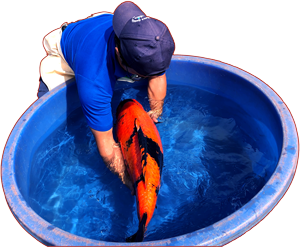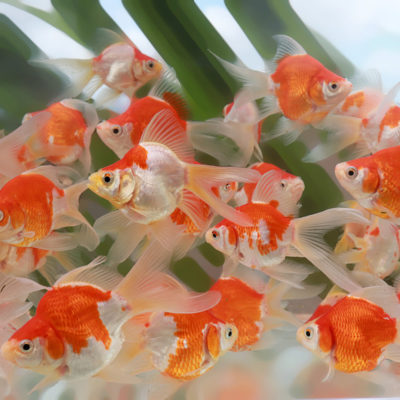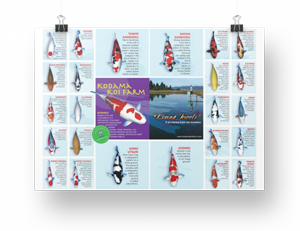
In this article, we’ll explore the origins, varieties, and biological characteristics of goldfish. We’ll also compare them to koi along the way – especially for those who may be wondering: Are goldfish and koi the same? or How do koi and goldfish differ?
Goldfish (Carassius auratus) are among the most iconic and widely kept ornamental fish in the world. Domesticated over a thousand years ago in ancient China, these freshwater fish have been selectively bred into a breathtaking variety of colors, body shapes, and fin types. While they’re often mistaken for koi carp due to some visual similarities, goldfish are a distinct species with their own unique care needs, appearance, and biological traits.
We created this beginner goldfish guide to help new hobbyists understand the fundamentals of goldfish care and appreciation.
Brief History of Goldfish Origins
Goldfish belong to the family Cyprinidae, which includes various carp species. While goldfish and koi carp (Cyprinus carpio) share a distant common ancestor in wild East Asian carp, they are genetically distinct.
Goldfish were selectively bred in China from the Prussian carp (Carassius gibelio), focusing on bright color mutations and compact forms. Koi, on the other hand, were developed centuries later in Japan from the Amur carp and are bred primarily for large outdoor ponds.
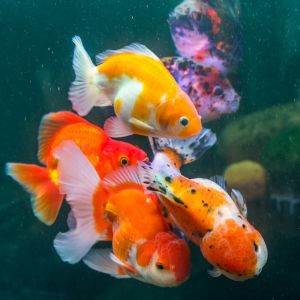
Are goldfish and koi the same species? No, goldfish (Carassius auratus) and koi carp cannot breed to produce viable offspring, confirming their classification as separate species.
A Brief Note on Goldfish Domestication
Goldfish were the first fish domesticated for ornamental purposes, dating back to the Tang Dynasty (618–907 AD). Their symbolic presence in Chinese culture as bringers of wealth and luck contributed to their spread throughout East Asia and eventually to the West. Their development diverged significantly from koi, which emerged centuries later as status symbols in Japan and are often judged in competitive shows.
Goldfish Lifespan: How We Help Ours Live Longer
Goldfish are well-loved freshwater pets known for their brilliant colors and relatively easy care. On average, goldfish live between 10 to 15 years, but with the right care, they can live well beyond 20 years.
At Kodama Koi Farm, we always emphasize that proper care makes a big difference. Water quality, tank or pond size, a nutritious diet, and regular maintenance all play a role in their lifespan. Goldfish need plenty of space to thrive—far more than many people assume. Overcrowding can lead to stress and health problems, so we encourage new hobbyists to give their goldfish the room they need to grow and live long, healthy lives.
Morphological Features of Goldfish
Goldfish have five types of fins that help them swim gracefully and stay balanced: two pectoral fins, two pelvic fins, one dorsal fin, one anal fin, and a caudal (tail) fin. These fins work together to control movement, direction, and stability in the water. Along their lateral line, goldfish typically have 25 to 31 smooth, rounded cycloid scales that assist with sensing changes in their environment.
Goldfish Physical Traits
Goldfish are popular freshwater fish admired for their bright colors, elegant fins, and distinctive body shapes. With a wide range of varieties, each goldfish showcases unique physical traits that reflect careful breeding. These features not only enhance their beauty but also influence their swimming ability, behavior, and overall health.
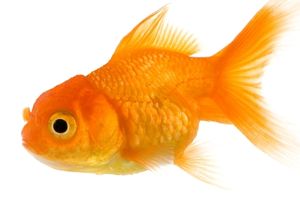
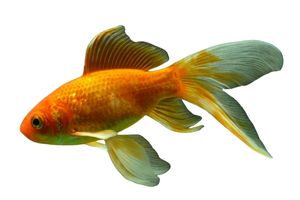
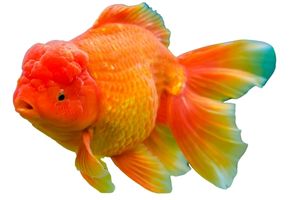
Types of Goldfish for Indoor and Outdoor
From the tranquil depths of the pond, these exquisite fish glide with effortless grace, captivating onlookers with their vibrant colors and intricate patterns. Their presence not only enhances the aesthetics of the aquatic environment but also adds a sense of tranquility and harmony to the surrounding ecosystem. As they gracefully navigate through water, each movement seems like a brushstroke on a living canvas, creating a symphony of beauty that mesmerizes all who behold it.
Here are some types of goldfish that are most commonly favored for ponds.

Ranchu Goldfish
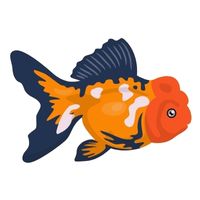
Oranda Goldfish
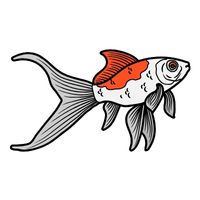
Comet Goldfish
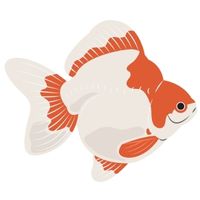
Ryukin Goldfish
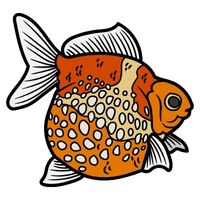
Pearlscale Goldfish
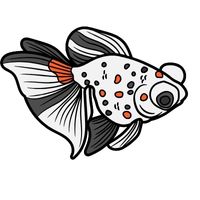
Telescope Goldfish
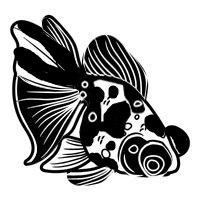
Panda Goldfish
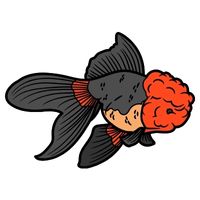
Black Oranda Goldfish
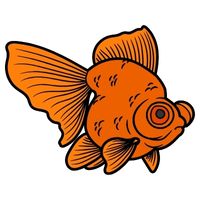
Butterfly Goldfish
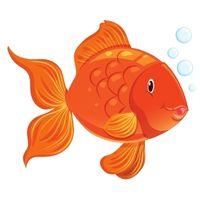
Chunky Goldfish
Chunky Goldfish is not a distinct breed but rather a descriptive term that may refer to goldfish with a rounder or plumper body shape. This characteristic can be found in various goldfish varieties, such as Ryukin or Pearlscale. It’s important to ensure all goldfish, regardless of body shape, receive proper care, including a balanced diet and clean water, to maintain their health and well-being.
Each of these goldfish varieties brings its own unique charm and features to any aquarium or pond setup!
TAMASABA GOLDFISH
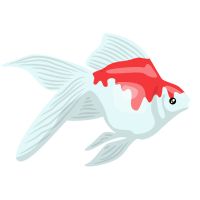
The Tamasaba goldfish is a hybrid variety originating from Japan, characterized by its elongated body, flowing fins, and single tail fin. It is a cross between the common goldfish and the tamasuki. Tamasabas come in various colors and are prized for their graceful swimming and elegant appearance. They require clean water and a balanced diet to thrive, and they are valued by enthusiasts for their beauty and unique body shape.
In this series of captivating videos, immerse yourself in the enchanting realm of Tamasaba Goldfish, renowned for their stunning colors, graceful movements, and serene presence.
Fancy Goldfish: Aesthetic and Care Considerations
Oranda
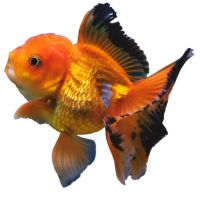
Ranchu
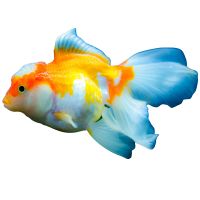
Fantail
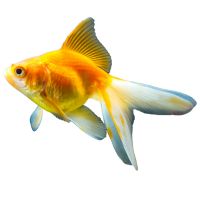
Black Moor
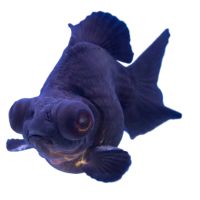
Key Differences of Goldfish vs Koi
| Feature | Goldfish (Carassius auratus) | Koi (Cyprinus carpio) |
|---|---|---|
| Average Size | 4–8 inches; up to 12+ in ponds | 24–36+ inches |
| Body Shape | Highly variable | Streamlined, torpedo-shaped |
| Fin Types | Single or double, elaborate | Always single and strong |
| Color Range | Broad (orange, red, black, white, calico, blue) | Patterned; limited to select hues |
| Lifespan | 10–20 years | 25–40+ years |
| Ideal Habitat | Aquariums, small ponds | Large outdoor ponds |
Goldfish Behavior and Care
- They are social and can live in groups.
- They scavenge along the substrate and may uproot plants.
- Fancy goldfish are slower swimmers and can be easily outcompeted by faster tankmates, including koi.
Koi Behavior and Care
Koi behavior varies with variety and environment. In general:
-
They are social and thrive in groups.
-
They forage along the pond bottom, often stirring up debris and nibbling on plants.
-
Larger koi can be territorial, especially during feeding or breeding.
-
They are strong swimmers and may outcompete slower fish, including fancy goldfish.
Explore the World of Koi
Goldfish are just the beginning—if you’re curious about koi, it’s time to dive deeper. Learn more about koi and see why they’re prized for their beauty, size, and symbolism. Ready to start your koi journey?
Here’s where you can buy koi fish from trusted experts at Kodama Koi Farm.
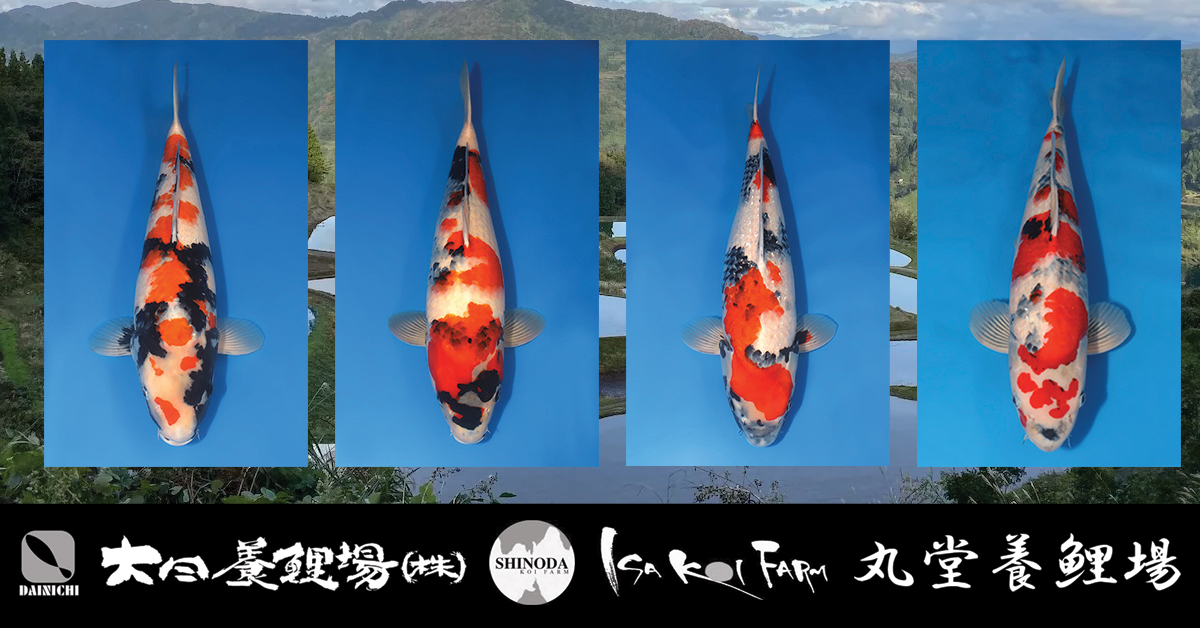
Joy of Keeping Goldfish: Beauty, Simplicity, and Serenity
Their variety in color and form appeals to hobbyists, while the act of caring for them offers a soothing, manageable routine.
Often tied to nostalgic memories, goldfish provide peaceful companionship and enhance home environments with visual tranquility, becoming cherished parts of daily life.
Goldfish Aquarium and Pond Considerations
Goldfish in Aquariums
Goldfish—especially fancy varieties—are ideally suited for home aquariums. They thrive in cooler water, require moderate filtration, and are more forgiving for beginner aquarists. However, they produce significant waste, so tank maintenance and appropriate stocking are crucial.
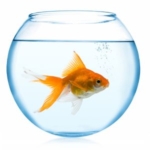
Goldfish in Outdoor Ponds
Hardier types such as comet or shubunkin goldfish do well in small to medium ponds, even in temperate climates. Unlike koi, they do not need deep ponds or high-output filtration systems. This makes goldfish a more accessible and affordable choice for hobbyists with limited space.
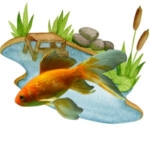
Koi Compatibility
Goldfish and koi can coexist in large, well-filtered ponds, but careful monitoring is needed. Koi grow faster, eat more aggressively, and may compete with or even injure smaller goldfish, particularly during feeding or spawning seasons.
Proper goldfish care involves maintaining stable water conditions, avoiding sharp décor (to protect delicate fins), and providing a balanced diet. Because of their diverse body shapes, some fancy goldfish may require floating pellets, gel foods, or multiple small feedings to avoid digestive issues.
Goldfish F.A.Q -Key Factors of why People Prefer Goldfish
How Much Do Goldfish Cost? A Guide to Prices for Common and Fancy Breeds
Goldfish Price
Goldfish prices vary based on breed, size, and rarity. Common types like Comets or Shubunkins cost as little as $1–$10, making them great for beginners. Fancy varieties like Orandas, Ranchus, or Bubble Eyes typically range from $20 to over $100, with rare or show-quality fish reaching several hundred dollars.
Beyond the fish itself, costs also include tanks, filters, food, and water treatments. While often seen as low-cost pets, goldfish do require a proper setup and care. Still, for many, their beauty and peaceful presence make them a worthwhile investment.
What Should You Feed Goldfish? A Complete Guide to Goldfish Diet and Nutrition
Goldfish Diet/Food
Goldfish need a balanced diet to stay healthy and vibrant. Their primary food includes high-quality pellets or flakes made specifically for goldfish, which provide essential nutrients. To support variety and digestion, many owners also feed them vegetables like peas, spinach, or zucchini, as well as occasional treats like bloodworms or brine shrimp. Overfeeding can lead to health issues, so portion control is important. A varied, well-managed diet helps goldfish grow properly, maintain bright colors, and live longer.
What Are the Best Goldfish Beginner Tips for Setting Up a Healthy Aquarium?
Best Goldfish to Buy for First-Time Fish Keepers
When you’re ready to buy goldfish, it’s important to know what to look for and how much to expect to spend. Common goldfish like Comets and Shubunkins usually cost between $2–$10 each and are a great starting point for beginners due to their hardiness and low maintenance needs. Fancy goldfish – such as Orandas, Ranchus, or Bubble Eyes – can range from $15 to over $100 depending on size, coloration, and breeder quality, making them a better choice once you have more experience.
Always buy goldfish from reputable pet stores or breeders who keep their tanks clean and don’t overcrowd the fish. Look for active swimmers with smooth scales, clear eyes, and no visible damage or signs of illness like white spots or clamped fins. Avoid fish that sit at the bottom or have trouble swimming straight, as these could be sick or stressed.
Before you bring your goldfish home, make sure your tank is cycled and has proper filtration. Even though goldfish are often sold as “starter fish,” they produce a lot of waste and need at least 20 gallons for one fish, plus 10 gallons for each additional fish. Buying healthy goldfish and giving them the space and care they need from the start will lead to a more enjoyable and long-lasting experience.
Goldfish Fun Facts and Trivia
Jump into the cool world of goldfish with fun facts and awesome trivia! You won’t believe what these little fish can do! 🐠✨
Did you know goldfish can recognize faces and even have a longer attention span than most people give them credit for?
- They’re one of the few species of fish that can be trained to do tricks, and some have even been known to live for decades. Truly fascinating aquatic companions!
Goldfish have captivated enthusiasts with their remarkable feats.
- The longest goldfish ever recorded measured a whopping 18.7 inches! Additionally, a goldfish named “Goldie” holds the Guinness World Record for the oldest goldfish, living a remarkable 43 years. These achievements underscore the enduring charm and resilience of these beloved aquatic creatures.
How to tell if a goldfish is male or female?
- Determining a goldfish’s gender can be tricky. Males are slimmer with breeding tubercles, while females are rounder, especially when carrying eggs. During breeding, females may have a more pronounced vent. Observation of these traits helps in identifying their gender accurately.
Iconic Goldfish: Symbolism, Inspiration, and Cultural Influence
- In East Asian cultures, they symbolize luck, prosperity, and abundance, often depicted in paintings and ceramics. In Western art, they’ve been immortalized by artists like Henri Matisse and Paul Klee. Their vibrant colors and graceful movements continue to inspire creativity across various mediums, reflecting their timeless allure.
Fascinating Goldfish: Quirks, Anecdotes, and Surprising Intelligence
- Goldfish are full of quirky behaviors and anecdotes. Some have been known to play with objects in their tanks, pushing them around for amusement. Others have shown preferences for certain types of music, swimming more actively when it’s played. One particularly famous goldfish even learned to jump through hoops on command, showcasing their surprising intelligence and adaptability.
Thinking about in buying japanese koi instead of goldfish? We invite you to discover vibrant, healthy koi sourced directly from Japan’s finest bloodlines—right here at Kodama Koi Farm. When you shop with us, you’re bringing home premium koi that add elegance, color, and life to your pond. Explore our collection today and find the perfect koi companion to elevate your water garden.
Complete Your Pond Setup with Quality Supplies
Visit Kodama Koi Supply for trusted filters, food, and High Quality Pond Products. Everything you need to keep your koi healthy and your pond thriving—shop now!
